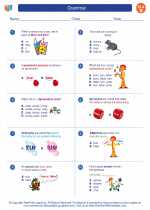Plosives or Stops
Plosives, also known as stops, are a category of consonant sounds that are produced by completely blocking the airflow in the vocal tract and then releasing it. This results in a sudden burst of sound. Plosives are classified into three main types: voiceless, voiced, and aspirated.
Types of Plosives
- Voiceless Plosives: These sounds are produced without vibrating the vocal cords. Examples include /p/, /t/, and /k/.
- Voiced Plosives: These sounds are produced with vibration of the vocal cords. Examples include /b/, /d/, and /g/.
- Aspirated Plosives: These sounds are produced with a strong burst of air. Examples include the initial sounds in words like "pie," "tie," and "kite."
Study Guide
Here are some key points to remember when studying plosives or stops:
- Understand the mechanism of producing plosive sounds, including the complete blockage and sudden release of airflow.
- Practice identifying and differentiating between voiceless, voiced, and aspirated plosives in words and sentences.
- Learn the phonetic symbols for plosive sounds, such as /p/, /t/, /k/, /b/, /d/, and /g/.
- Listen to and mimic native speakers to improve the pronunciation of plosive sounds.
- Explore word lists and sentences containing plosives to enhance recognition and production of these sounds.
Remember to practice regularly and seek feedback to improve your proficiency in producing and identifying plosives or stops!
.◂English Language Arts Worksheets and Study Guides Second Grade. Grammar
Study Guide Grammar
Grammar  Worksheet/Answer key
Worksheet/Answer key Grammar
Grammar  Worksheet/Answer key
Worksheet/Answer key Grammar
Grammar  Worksheet/Answer key
Worksheet/Answer key Grammar
Grammar 

 Worksheet/Answer key
Worksheet/Answer key
 Worksheet/Answer key
Worksheet/Answer key
 Worksheet/Answer key
Worksheet/Answer key

The resources above cover the following skills:
Students employ a wide range of strategies as they write and use different writing process elements appropriately to communicate with different audiences for a variety of purposes. (NCTE)